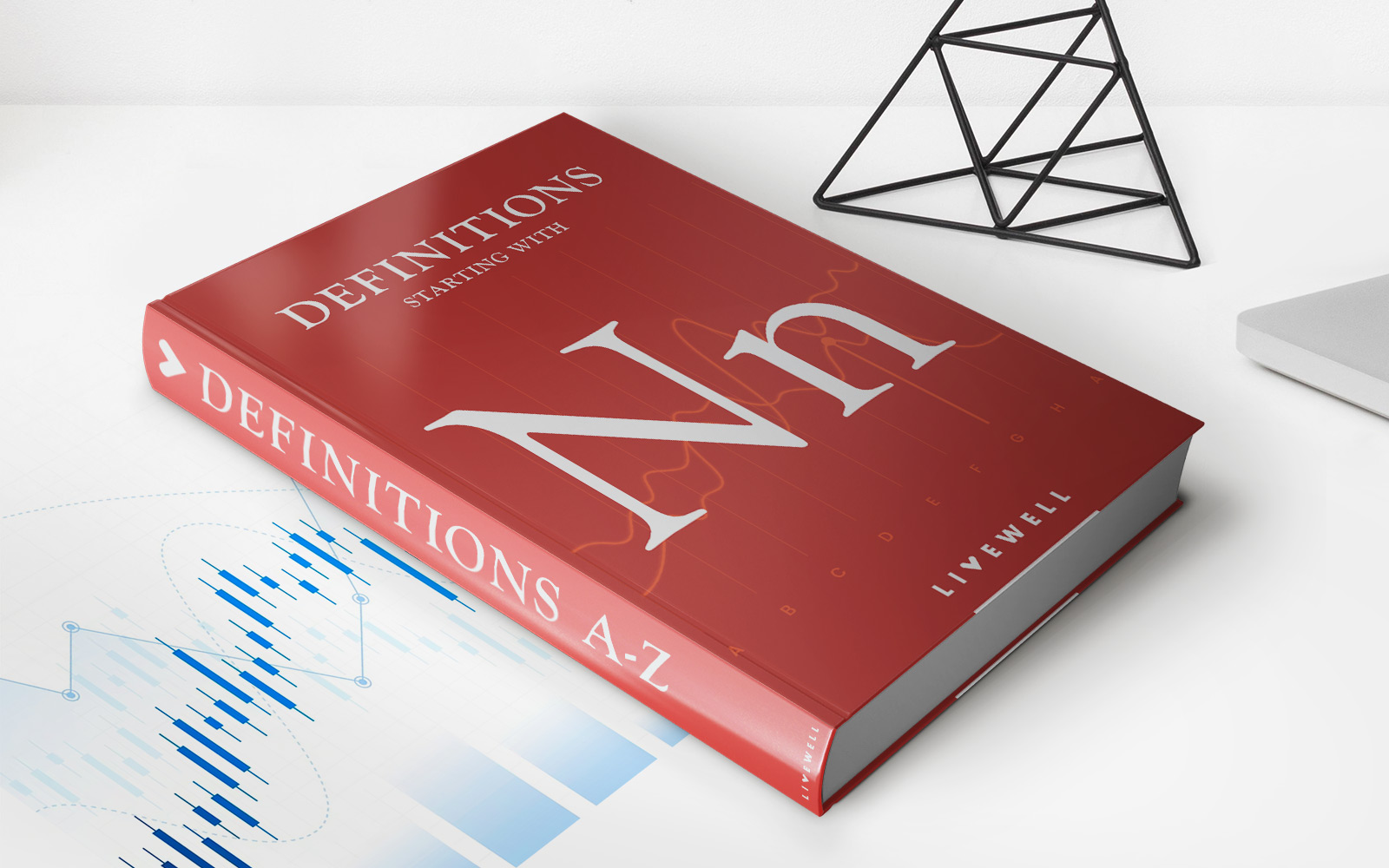Home>Finance>What Are The Pros And Cons Of U.S. Savings Bonds


Finance
What Are The Pros And Cons Of U.S. Savings Bonds
Published: January 16, 2024
Discover the pros and cons of U.S. Savings Bonds and make informed financial decisions. Explore the benefits and drawbacks in this comprehensive finance guide.
(Many of the links in this article redirect to a specific reviewed product. Your purchase of these products through affiliate links helps to generate commission for LiveWell, at no extra cost. Learn more)
Introduction
Welcome to our comprehensive guide on U.S. Savings Bonds! Whether you are a seasoned investor or just starting to explore different financial instruments, understanding the pros and cons of U.S. Savings Bonds is essential. U.S. Savings Bonds are a popular investment option offered by the U.S. Department of the Treasury that allows individuals to lend money to the government, while earning interest on their investment over time.
U.S. Savings Bonds are considered a safe and reliable investment, backed by the full faith and credit of the U.S. government. They offer individuals a way to save money for the future, whether it’s for retirement, education expenses, or a rainy day fund. However, like any investment, U.S. Savings Bonds come with their own set of advantages and disadvantages.
In this article, we will explore the pros and cons of U.S. Savings Bonds to help you make an informed decision about whether they are the right investment vehicle for your financial goals. We will discuss the potential benefits of U.S. Savings Bonds, such as their low risk and tax advantages, as well as the drawbacks, including their limited growth potential and liquidity restrictions.
Before we dive into the details, it’s important to note that U.S. Savings Bonds are available in two different types: Series EE Bonds and Series I Bonds. Series EE Bonds are fixed-rate bonds that earn a fixed interest rate over a period of 20 years, while Series I Bonds are inflation-protected bonds that offer a fixed rate of return combined with an adjustable inflation rate.
Now that you have a general understanding of U.S. Savings Bonds, let’s explore the pros and cons in greater detail. By the end of this guide, you’ll have a clearer picture of whether U.S. Savings Bonds align with your investment strategy and financial aspirations.
Pros of U.S. Savings Bonds
U.S. Savings Bonds offer several advantages that make them an attractive investment option for many individuals. Let’s take a closer look at the pros of U.S. Savings Bonds:
- Low Risk: One of the primary benefits of U.S. Savings Bonds is that they are considered a low-risk investment. As they are backed by the U.S. government, there is virtually no risk of default. This makes them a popular choice for investors who prioritize capital preservation.
- Tax Advantages: U.S. Savings Bonds offer certain tax advantages. The interest earned on these bonds is exempt from state and local taxes, and if the funds are used for qualified education expenses, the interest may also be federally tax-free. This can be particularly beneficial for individuals looking to save for their child’s education.
- Flexible Investment Amounts: U.S. Savings Bonds can be purchased in various denominations, making them accessible to a wide range of investors. You can start with as little as $25 for electronic bonds, or $50 for paper bonds.
- Long-Term Investment: U.S. Savings Bonds are typically designed for long-term investment. For example, Series EE Bonds reach their full face value after 20 years, and Series I Bonds continue to earn interest for up to 30 years. If you have a long-term financial plan or a specific goal in mind, U.S. Savings Bonds can be a valuable addition to your portfolio.
- Protection Against Inflation: Series I Bonds are inflation-protected, which means they provide a fixed rate of return combined with an adjustable inflation rate. This can help protect the purchasing power of your investment over time. If you are concerned about inflation eroding the value of your savings, Series I Bonds can be a suitable choice.
- Easy Accessibility: U.S. Savings Bonds can be easily purchased online through the TreasuryDirect website, making them a convenient investment option. You can also manage your investments and keep track of your bond holdings with ease.
These are just a few of the key advantages of investing in U.S. Savings Bonds. Their low risk, tax advantages, flexible investment amounts, long-term nature, protection against inflation, and easy accessibility make them an appealing choice for many investors. However, it’s important to also consider the cons of U.S. Savings Bonds, which we will explore in the next section.
Cons of U.S. Savings Bonds
While U.S. Savings Bonds offer several benefits, it’s important to consider the drawbacks before making a decision. Here are some cons of U.S. Savings Bonds:
- Limited Growth Potential: Compared to other investment options, U.S. Savings Bonds have relatively low interest rates. While Series I Bonds provide inflation protection, their fixed rate of return may not keep pace with higher-yielding investments such as stocks or mutual funds. If your goal is to maximize your investment returns, U.S. Savings Bonds may not be the most lucrative option.
- Penalties for Early Redemption: If you need to access your funds before the maturity date, you may face penalties for early redemption. U.S. Savings Bonds have a minimum holding period of 12 months, and if redeemed within the first five years, you forfeit the interest earned over the last three months. This lack of liquidity can be a disadvantage if you require immediate access to your money.
- Fixed Interest Rates: Series EE Bonds earn a fixed interest rate over their 20-year term, which means that if interest rates rise significantly during that period, your bond will not benefit from the higher rates. This can result in missed opportunities for higher returns on your investment.
- Interest Taxation: While U.S. Savings Bonds offer tax advantages, it’s important to note that the interest earned is subject to federal income tax. While the tax can be deferred until the bond is redeemed or reaches maturity, it’s essential to consider the impact of taxation on your overall investment strategy.
- Opportunity Cost: By investing in U.S. Savings Bonds, you may be missing out on potential higher returns from other investment options. Depending on your risk tolerance and financial goals, you may want to explore alternative investments with the potential for greater growth.
- Not Ideal for Short-Term Savings: U.S. Savings Bonds are designed for long-term investment, so if you have short-term savings goals or need access to your funds within a few years, they may not be the most suitable choice. Consider other options that offer more flexibility and liquidity for your short-term financial needs.
By understanding the potential drawbacks of U.S. Savings Bonds, you can make a more informed decision about whether they align with your investment strategy and financial goals. While they offer stability and certain tax advantages, the limited growth potential, penalties for early redemption, fixed interest rates, and potential opportunity cost should be carefully considered.
Now that you have a thorough understanding of both the pros and cons of U.S. Savings Bonds, you can weigh the advantages and disadvantages to determine if they are the right investment vehicle for you. It’s always advisable to consult with a financial advisor who can provide personalized guidance based on your specific financial situation and goals.
Conclusion
U.S. Savings Bonds can be a valuable addition to your investment portfolio, offering stability, low risk, and tax advantages. They provide individuals with an opportunity to lend money to the U.S. government and receive interest on their investment over time. However, it’s important to consider both the pros and cons before deciding if U.S. Savings Bonds are the right choice for you.
The pros of U.S. Savings Bonds include their low risk, tax advantages, flexible investment amounts, long-term nature, protection against inflation, and easy accessibility. These factors make them an appealing option for investors looking for a safe and reliable way to grow their savings over time.
On the other hand, the cons of U.S. Savings Bonds include their limited growth potential, penalties for early redemption, fixed interest rates, potential taxation on the interest earned, and the opportunity cost of potentially higher returns from other investments. It’s important to consider these factors and evaluate whether the benefits of U.S. Savings Bonds align with your investment goals and financial needs.
Ultimately, the decision to invest in U.S. Savings Bonds should be based on your individual circumstances and priorities. If you prioritize capital preservation, value tax advantages, and have a long-term investment horizon, U.S. Savings Bonds may be a suitable option for you. However, if you are seeking higher growth potential or require more liquidity in your investments, you may want to explore alternative investment options.
It’s always a good idea to consult with a financial advisor who can provide personalized advice based on your unique financial situation. They can help you evaluate your investment goals, risk tolerance, and overall portfolio diversification to determine if U.S. Savings Bonds are the right fit for you.
Remember, investing is a long-term commitment, and it’s important to carefully weigh the pros and cons of any investment before making a decision. By considering the advantages and disadvantages of U.S. Savings Bonds, you can make a well-informed choice that aligns with your financial aspirations and helps you achieve your long-term goals.














